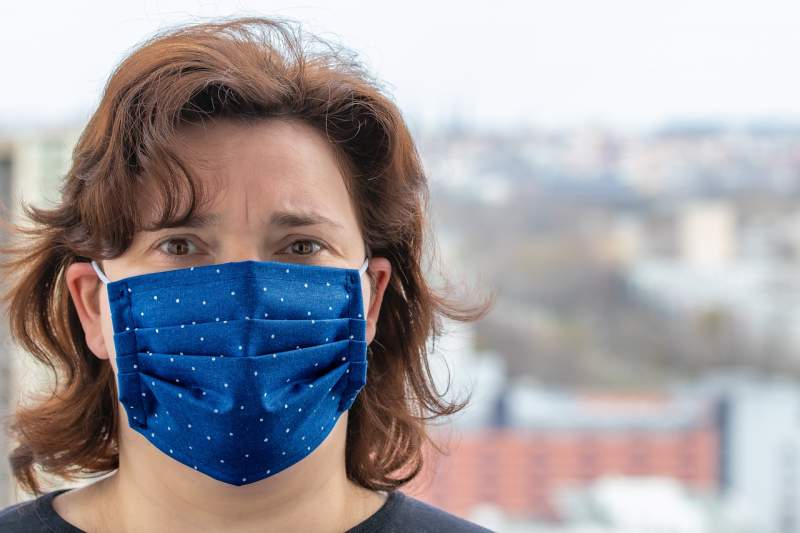Every day of the week, millions of respirators, both disposable and reusable, are used by professionals all across the United States. From construction sites and medical facilities to manufacturing plants and mineral mines, there are numerous workplace environments that require the use of high quality personal protective equipment to keep workers safe while on the job. This mandates that employers provide employees with the protection they need, while employees follow guidelines and a few important safety tips to protect their health.
It’s an unfortunate fact that there is a variety of airborne illnesses that can be contracted without the proper use of a respirator. The average worker can find themselves exposed to harmful smocks, mists, sprays, gases, and vapors. Without the proper safety precautions, hundreds of lives may be at stake. Luckily, though, these can easily be avoided by utilizing the proper equipment and implementing the latest safety precautions.

Recognize the Hazards
Even if you or your employee is only using hand tools or power tools, there is still a chance that they can be exposed to toxins that can cause irreversible damage to their lungs and other parts of their body. The worst thing about many of these illnesses is that you won’t see typical symptoms right away. Instead, these illnesses tend to damage your body over time, to the point where you might not even know when it is that you were first affected. While carbon monoxide will be immediately recognizable within minutes, hazards such as asbestos can take years to fully take effect in your body. Be sure you recognize the various hazards in your environment and adjust your plan accordingly.
Use Personal Protective Equipment
Make sure you’re using comfortable, compliant respiratory protection that is specifically designed to block the potential hazards of your specific environment. Participate in fit tests to ensure a safe, accurate fit and report any damage or tears to your mask to your safety officer.
Aside from wearing equipment that will filter out particulates and other hazards that you might come across, you can also ensure that there is proper ventilation throughout the area. This will make it less likely for harmful substances to get trapped in a single area, ultimately affecting many employees.
The Risks are Real
There might be some employees who assume that they won’t be affected by the dangerous substances in a given worksite, but they’re mistaken. There’s no element of skill or experience that can stop dangerous particles from entering someone’s airway. No matter how long an employee has been with the company, the concept of respiratory safety must be inculcated. Everyone must take this topic seriously, with no exceptions.
Communication is Key
Just as with everything else in life, communication is key when it comes to respiratory protection and safety. Your employees must be given clear and direct communication on what is and isn’t accepted when it comes to respiratory safety so that they can properly do their jobs in a safe and efficient fashion. It’s common for employers to prepare safety packets and, in some cases, safety instructional videos at the time of hiring, but it’s just as important for this information to be updated periodically and shown to all employees.
You can break up your employees into safety groups that can better learn alongside each other, post clear signage near visible areas to remind employees to wear their respiratory protection, and schedule frequent fit tests to ensure masks fit properly and comfortably.
Stay Prioritized
Some workers may run into the problem of not being able to properly prioritize their response should a situation occur. Some employees might immediately attend to their coworkers while neglecting their own safety. While this is altruistic, it will generally lead to injury on the part of the employee and ultimately a diminished ability to help others. Just as the saying goes that you can’t pour from an empty cup, it’s important for your employees to understand that they must help themselves before they can help their coworkers.
Once all employees in the affected area are protected, it’s important that the source of the problem be dealt with. If your employees find themselves in a situation where smoke or dust continues to be released into the surrounding environment, they should attempt to handle the source of the problem immediately, so long as they are protected and safe.
Have a Plan
The best way to feel safe and prepared is to have a respiratory protection plan. Once you’ve come to a decision on how your employees should respond to a situation, the equipment involved, and what to do in cases of emergency, that plan should be written down and ultimately displayed in prominent areas throughout the worksite. In this way, you’ll be able to ensure that your employees are aware of the safety plan and will be just as prepared as you are.
There is no one size fits all solution to respiratory protection and safety. Just as each worksite and group of employees is different, so too will your individual safety plan be different. So long as all of your steps ultimately conform to regulations put in place in your state, you are free to adapt your strategy to whatever works best for you and your employees.
Author Bio:
Carolyn Clarke is a freelance writer based in Malibu, California. She spent 25 years in the construction industry, where she worked with companies like Moldex-Metric to develop safety programs. In her free time, she likes to work on home repair projects.
